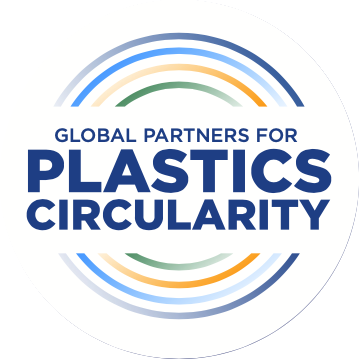
PLASTICS ADDITIVES REPORT FACT SHEET

UNEP’s Chemicals in Plastics Report (2023) sought to document the reportedly “often-overlooked chemical-related issues of plastic pollution, particularly their adverse impacts on human health and the environment as well as on resource efficiency and circularity”. The UNEP report was followed in March 2024 by the ‘PlastChem’ report, published with funding support from Norway. To highlight the abundance of information that already exists for these chemicals, ICCA compared and validated the 13,000+ chemicals identified in UNEP’s Chemicals in Plastics Report to information available from global chemical inventories and toxicology information.
ICCA analysis and UNEP’s report affirms governments are able to use existing health and environmental data to inform risk-based national policy on additives.
Over 77% of the chemicals associated with plastics reported by UNEP have sufficient toxicological data to assist in identifying plastic associated chemicals with low risks. Our analysis directly contradicts the notion that there is little information available for these chemicals and the only solution is to implement a hazard-only based chemical management regime. Identifying chemicals with low potential risks allows regulators to conduct rapid risk screenings, focus limited resources on only those chemistries that need a detailed risk assessment, and implement risk management measures where only where required.
TOXICOLOGICAL DATA FOR UNEP REPORT CHEMICALS1
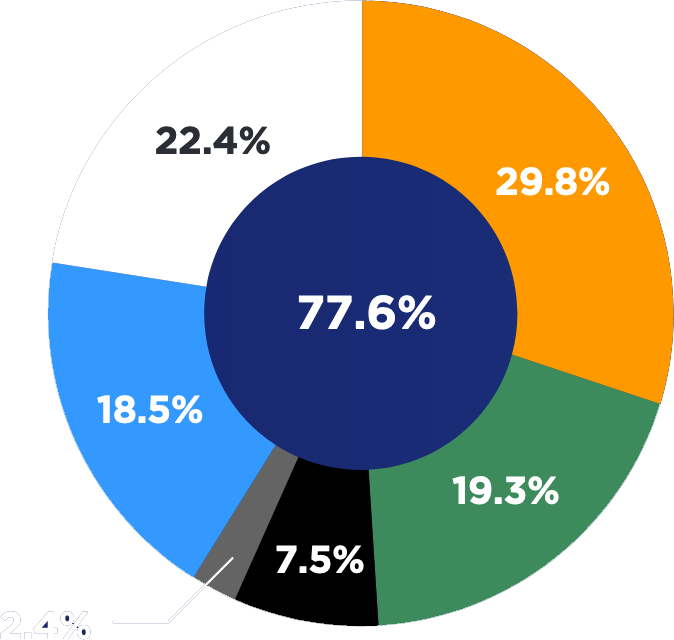
ICCA is verifying which chemicals are currently being used as plastic additives.
Plastic additives are chemical substances are often added to plastic materials, either during production or later in the process of making products and packaging that neable efficient processing of the plastics and/or provide beneficial properties to the final plastic products. The number of chemicals used as additives is expected to be a smaller subset of those identified by UNEP with a greater percentage of high-quality data available to health and environmental regulators.
ICCA’s analysis reveals that 88.3% (11,646) of UNEP’s catalogue of 13,186 chemicals are already referenced and indexed on one or more chemical inventory.
Moreover, 35.6% (4,678) of these are referenced and catalogued on more than 5 major chemical inventories. This affirms that there is robust and in-depth, pre-existing regulatory mapping of over 88% of chemicals associated with plastics under national and regional chemical frameworks.

UNEP REPORT1 CHEMICALS (13,186) ALSO LISTED ON SELECT CHEMICAL INVENTORIES

* Major inventory – indexed on one or more national inventories under which data generation and/or hazard or risk prioritization and evaluation processes exist.
** Present on one or more national or regional chemical inventories, including those not directly linked to robust chemical management processes.
The PlastChem Report (2024) claims to identify an additional 4,764 chemicals associated with plastics not in the original UNEP report. However, it is unclear if these additional chemicals have already been identified by UNEP, as many could not be matched against validated chemical inventories or toxicological lists. ICCA welcomes additional conversation about these additional chemicals, and verification to ensure that the list is accurate for regulatory and scientific use.
REPORTED CHEMICALS1,2 WITHOUT VERIFIED IDENTITIES
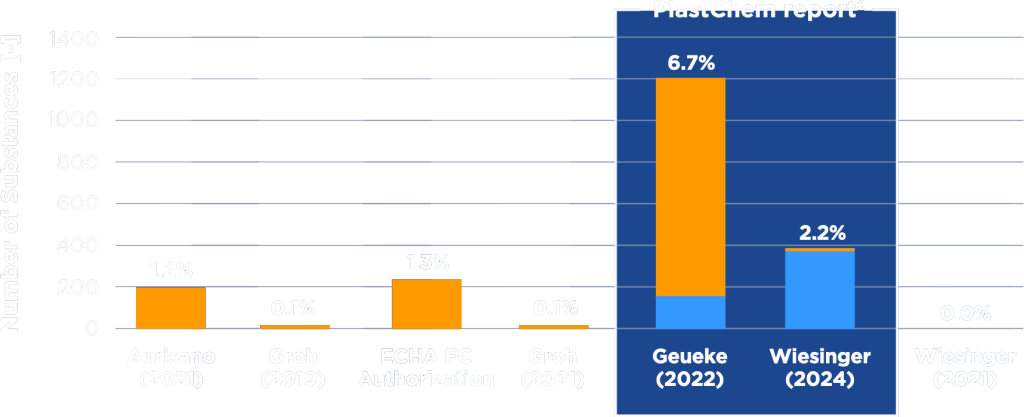
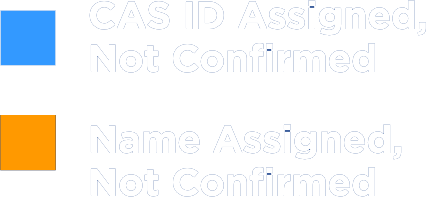
ICCA strongly supports chemical regulations driven by countries’ chemical management laws.
Many chemicals used as plastic additives are also used in other materials or for entirely different uses. That’s why it’s important to have comprehensive chemical management programs/laws to regulate chemicals holistically.
Chemicals management regulation is also addressed at the newly adopted Global Framework on Chemicals (GFC).
The GFC is a critical pathway and promotes the development of legally binding, comprehensive risk-based chemical management structures and tools.
ICCA is developing a Plastic Additives Database to address questions and concerns about additives in plastics.
The Plastic Additives Database will provide greater transparency, aggregate existing health, environmental, & chemical management information, and support risk-based chemical management capacity building in developing economies. Learn more at plasticscircularity.org/additives/

Information Sources and References
EXISTING TOXICOLOGICAL DATA SOURCE(S)
| Data Type | Details | Source |
|---|---|---|
| Threshold Value | Oral and/or Inhalation, Systemic Long-term (General Population) | 3 |
| Threshold Value | Inhalation, Systemic Long-term (Worker) | 3 |
| Threshold Value | 8-hour Occupational Exposure Limit (OEL) | 5 |
| Hazard Potential | No threshold value derived (low-moderate effects) | 4 |
| Hazard Potential | Substance is low hazard potential (e.g., high MW polymers) | 6 |
| Threshold Value | Statistical Point of Departure (SPOD) – Aurisano et al., 2023 | 7 |
| Threshold Value | Reference Dose (RfD), Tolerable Daily Intake (TDI) | 8 |
| Regulatory Assessment | CMP Phase 2 & 3 Risk Assessments (incl. grouping) | 9 |
| Regulatory Assessment | EU PACT – Data Generation & Assessment (REACH) | 10 |
| Regulatory Assessment | EU PACT – Assessment of Regulatory Need (REACH) | 10 |
| Regulatory Assessment | EU PACT – Regulatory Risk Management & Restriction | 10 |
| Toxicological Data | Data Available to Support Screening Threshold Derivation | 8 |
| Modeling & QSARs | Toxicological Threshold of Concern (TTC) Calculation(s) | 11, 12 |
Footnotes and References
1 United Nations Environment Programme and Secretariat of the Basel, Rotterdam and Stockholm Conventions (2023). Chemicals in plastics: a technical report. Geneva.
2 PlastChem Report. (2024). https://plastchem-project.org/
3 DNELs accessible from the ECHA REACH portal.
4 Based on available data, expert judgement of registrant(s), and ECHA guidance [ECHA part B Guidance on Derivation of DNEL/DMEL from Human Data, footnote 5]: no systemic, long-term general population or worker DNEL was derived for this substance.
5 OELs collected from national and professional organization data sources.
6 Expert judgement. Substances with a polymeric structure (e.g., MW > 1000 & low bioavailability) were positively identified using name matching queries.
7 Aurisano, Nicolò, et al. (2023) https://doi.org/10.1289/EHP11524
8 Judson, R. (2018). https://doi.org/10.23645/epacomptox.7800653
9 Canadian Chemical Management Plan https://www.canada.ca/en/health-canada/services/chemical-substances/chemicals-management-plan.html
10 ECHA PACT Tool https://echa.europa.eu/pact
11 Roberts, D. W., et al. (2015) https://doi.org/10.1016/j.yrtph.2015.09.017
12 EFSA (2019) https://doi.org/10.2903/j.efsa.2019.5708
*Aurisano, N., et al. (2021). https://doi.org/10.1016/j.cogsc.2021.100513.
* Groh, K., et al. (2019). Sci Total Environ 651, 3253-3268.
* Groh, K.J., et al. (2021). https://doi.org/10.1016/j.envint.2020.106225.
* Geueke et al., (2022). FCC MigEx DB (v1.0. https://www.foodpackagingforum.org/fccmigex.
* Wiesinger, H., et al. (2021). Environmental Science & Technology 55, 13, 9339–9351.
* Wiesinger, H., et al. (2024). Open Database of Chemicals Measured in Plastic Products (Submitted).
